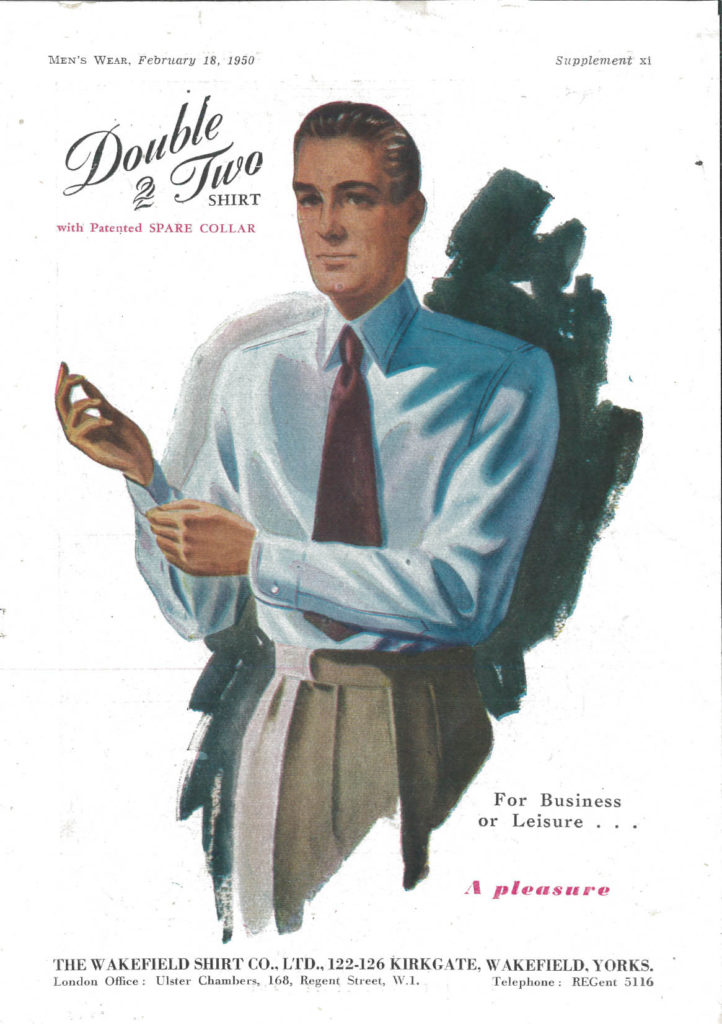Dr Anna Nyburg introduces her latest book and reveals how Jewish refugees brought design to the British clothing industry.
Anyone looking for an entertaining read in these difficult times could do worse than The Clothes on our Backs; How Refugees from Nazism Revitalised the British Fashion Trade.

Fans of 20th-century textiles will be well acquainted with the work of Jacqueline Groag, Marian Mahler, Tibor Reich and others. But they may not have made a connection with brands such as Kangol, Ettinger or Charnos. And yet both the textile designers and the manufacturers of berets, wallets and underwear share a common story: they were all refugees from Nazi Europe. Some 80,000 people came to safety in Britain before the outbreak of World War II. Most of these refugees were Jewish, or classified by the Nazis as such. Jews have long been active in the textile and clothing trades, since the Middle Ages in fact, when one of the limited options open to them was to walk across the country selling second-hand clothes and lengths of fabric. This was the beginning of the ‘rag trade’.
By the time of their emancipation in the 19th century, they had clocked up not only miles but also experience and skills: they knew who bought what, where and at what price. In the first two decades of the 20th century, they moved quickly from creating small fabric and tailoring shops, to founding modern department stores in Berlin and other cities in central Europe. These sleek modernist buildings were not just where women could now buy ready-to-wear clothes fit for their increasingly liberated lifestyle, but also hosted fashion shows and other fashion events.
Berlin in particular was the centre of prêt-à-porter: the manufacture, marketing and display of fashion garments took place in the capital of Weimar Germany. Along with Vienna, Budapest and Prague, it was a city where students could study textile design but also window display, fashion illustration and photography, subjects that were not usually on offer in British colleges as that time.
In 1933, Adolf Hitler came to power and with it came a threat to the livelihoods and, indeed, lives of the textile and clothing producers. Britain was one of the few countries where they would be safe from the Nazi menace. Just two who made it to asylum in Britain were Jakob Spreiregen and his nephew Joseph Meisner, Poles who had previously emigrated to France where they had set up their first hat business. They made berets by the traditional method of knitting an open shape, the top of which was joined up by hand, a process known as linking. Spreiregen arrived in Cumbria in 1937, taking advantage of a clever and creative scheme by local government to, on the one hand, save the lives of threatened Jewish industrialists in Europe and, on the other, bring much needed employment to the North of England. Kangol (K for knitting, ANG for Angora and OL for Wool) started in Cumbria with only four workers who had to learn beret making without the benefit of a shared language with their francophone employees. When war broke out it was Kangol who were given the order to make fatigue headgear for the armed forces. Who can think of Field Marshall Montgomery without his Kangol beret? Refugees, now ‘enemy aliens’, were largely interned on the Isle of Man unless they joined the Pioneer Corps or were engaged in production for the war effort, like Kangol. After the war, the company went from strength to strength, making the berets for the British Olympic team in 1948, followed by a Beatles model in the 1960s and a furry ‘furgora’. Kangol, like many other refugee entrepreneurs, were able exporters and, unlike their British counterparts, were not daunted at the thought of learning another foreign language or travelling, two experiences they had already weathered. Kangol won several of the Queen’s Awards to Industry for Export Achievement. Still trading today, albeit no longer from Cumbria, Kangol have celebrated their 80th birthday.
Among the many other refugees who made their mark in Britain were the founders of Silhouette, two German families who made underwear. The Silhouette story includes a radioactive corset, the fabulously successful ‘Little X’ girdle and a Silhouette musical.
Some came as designers, like the talented and tenacious Otto Weisz from Austria who landed the job at Pringle of Scotland’s first professional knitwear designer. It was he who came up with the concept of the twinset, that most British of outfits.
Then there were the refugee fashion illustrators, window display designers, photographers, journalists: they had every aspect of fashion covered, and British fashion flourished. Many of the companies are still trading today, although few people know the story of their desperate flight to Britain where they found a home but gave us in return employment, new design and technology, new fabrics and display practices.
Anna Nyburg is Lecturer at Imperial College London, and a Member of the Research Centre for German & Austrian Exile Studies at the IMLR
The Clothes on our Backs. How Refugees from Nazism Revitalised the British Fashion Trade by Anna Nyburg was published in February 2020 by Vallentine Mitchell. Paperback copies can be bought directly from the author a.nyburg@ic.ac.uk at £15 (includes UK postage) or hardbacks are available from the publisher at £55.

Splendid book. We live in Wakefield home of Double Two shirts. Donner and Meyer being the founders. In the 1940 -50s we were living in Northern Rhodesia my parents having fled Germany. My mother a relative of the Meyer family sent food parcels during the U.K. rationing to the Meyer family from NR to the U.K. Amazing!